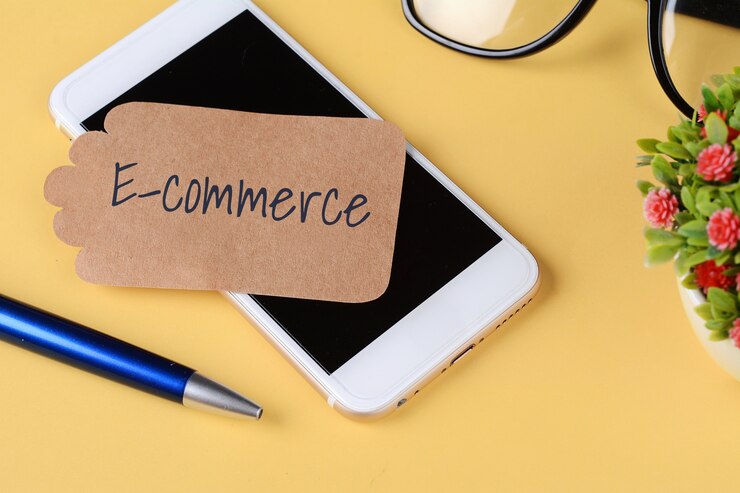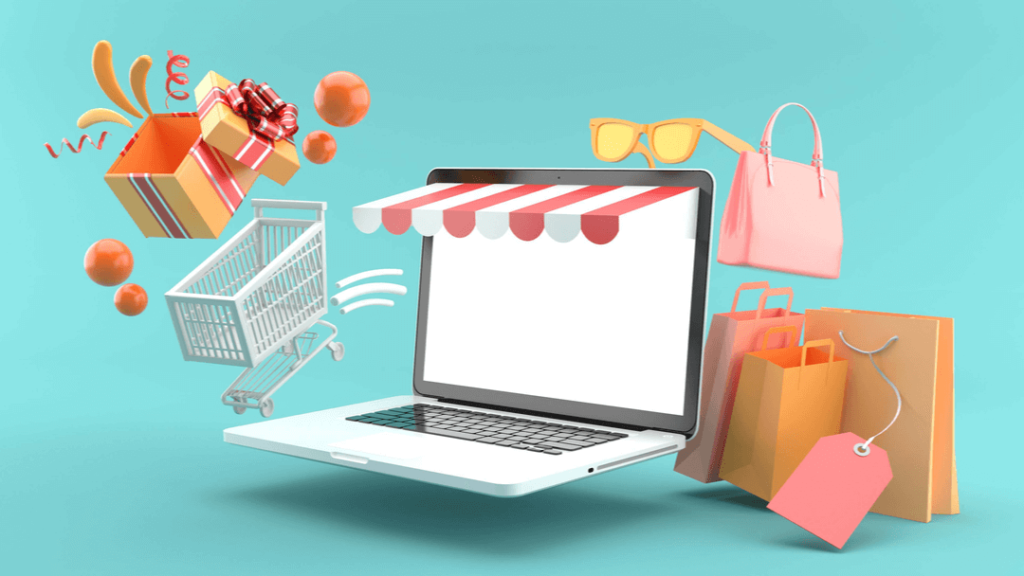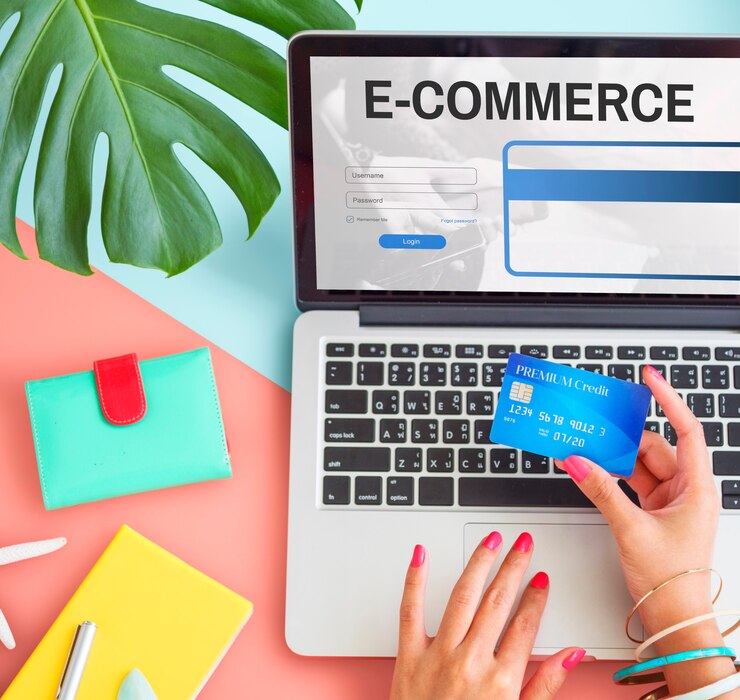This guide provides a step-by-step process for strategically planning an eCommerce business for long-term success. It covers everything from defining business goals, choosing a platform, designing the user experience, customizing the website, developing content, and adding products to integrating payment gateways and shipping providers. The guide also offers insights from real-life examples of businesses from various industries and how they have tackled unique challenges and opportunities.
Part 1: Defining Your Business Goals
Before diving into the website development process, it is crucial to have a clear understanding of your business goals.
Start by identifying your target audience, product offerings, and unique selling proposition. This will help you create a clear brand identity and a strong foundation for your website.
One of our clients, a small business owner who sold handmade candles, had a clear idea of her brand’s aesthetic and target audience.
She wanted a website that was visually appealing and easy to navigate, with an emphasis on product photography.
By defining her goals early on, she was able to build a successful ecommerce business that resonated with her target audience.When defining your business plan and goals, it’s important to consider the industry you’re in and the unique challenges and opportunities it presents.
For example, if you’re in the fashion industry, you may need to focus on creating a visually appealing website that showcases your products and allows customers to easily browse and purchase items.
At our web development agency, we’ve helped numerous fashion industry clients create mobile-responsive and conversion-optimized websites that have helped them grow their businesses.

Part 2: Choosing Your Platform
The platform you choose for your ecommerce website will have a significant impact on your business’s success. Shopify, Woocommerce, Laravel, and custom website development are popular options.
For clients who need a user-friendly platform with built-in payment processing, we often recommend Shopify.
It is easy to set up and customize, and it has a large app store with integrations for shipping, marketing, and more. WordPress, on the other hand, offers more customization options, but it requires more technical expertise.
So, if you’re looking for a user-friendly platform that offers a wide range of plugins and integrations, WordPress with WooCommerce may be a good option.
When choosing your ecommerce platform, it’s important to consider factors such as ease of use, scalability, and integrations with other tools and services.
At our agency, we’ve also helped clients with custom web development using Laravel, which offers a robust and scalable framework for ecommerce websites.
Part 3: Plan Your Website’s Design and User Experience
Once you have a clear understanding of your business goals and have chosen your platform, it’s time to design and develop your website.
This includes choosing a theme or creating a custom design, developing the website’s functionality, and integrating any necessary third-party apps or plugins.
One of our clients, a new online clothing store, needed a custom design that reflected their brand’s unique aesthetic.
We worked closely with them to develop a user-friendly website with easy navigation, clear product photography, and an intuitive checkout process. When planning your website’s design and user experience, it’s important to consider factors such as branding, navigation, and usability.
For example, if you’re in the food industry, you may want to focus on creating a website that showcases your products and allows customers to easily place orders and schedule deliveries.
At our agency, we’ve helped numerous food industry clients create user-friendly and visually appealing websites that have helped them increase sales and grow their businesses.
Part 4: Customizing Your Website
Now that you’ve selected your platform, it’s time to start customizing your website. This is where you can start to make your website truly unique and reflective of your brand.
If you’re using a platform like Shopify or WordPress, you’ll have access to a wide range of templates and themes that you can customize to suit your needs.
These templates are a great starting point, but they can also be limiting. To truly set your website apart, you’ll need to customize it beyond the template.
If you’re working with a development agency, they can help you create a custom design that reflects your brand’s unique identity. You can work with them to create a custom color scheme, font selection, and layout that best represents your business.
If you’re going the DIY route, you’ll need to invest time in learning the platform’s design tools. Platforms like Shopify and WordPress have easy-to-use drag-and-drop builders, making it simple to create your own designs without any coding knowledge.
Remember to keep your website user-friendly and easy to navigate. Customers should be able to find what they’re looking for quickly and easily. Keep your design consistent throughout your website, so it looks professional and polished.

Part 5: Develop Your Website’s Content
When developing your website’s content, it’s important to consider factors such as search engine optimization (SEO), product descriptions, and brand messaging.
For example, if you’re in the wellness industry, you may want to focus on creating content that highlights the benefits of your products and services and positions your brand as an authority in the space.
At our agency, we’ve helped numerous wellness industry clients develop content that resonates with their target audience and drives conversions.
Part 6: Adding Products
Once you’ve created your website, it’s time to start adding products. This is where you can showcase your inventory and start generating revenue.
Most ecommerce platforms have built-in product management tools that make it easy to add, organize, and categorize products.
If you’re using Shopify or WooCommerce, you can also use their product import/export feature to quickly add multiple products at once.
When adding products, make sure you include high-quality product photos and detailed descriptions. This will help customers get a better sense of your products and make informed buying decisions.
At our agency, we’ve helped numerous food industry clients create user-friendly and visually appealing websites that have helped them increase sales and grow their businesses.
Part 7: Integrate Payment Gateways and Shipping Providers
When integrating payment gateways and shipping providers, it’s important to consider factors such as transaction fees, shipping rates, and ease of use for customers.
For example, if you’re in the tech industry, you may want to offer multiple payment options and integrate with shipping providers that offer fast and reliable delivery.
At our agency, we’ve helped numerous tech industry clients integrate payment gateways and shipping providers that meet their specific needs and preferences.
Part 8: Test and Optimize Your Website
When testing and optimizing your website, it’s important to consider factors such as load times, user experience, and conversion rates.
For example, if you’re in the travel industry, you may want to focus on optimizing your website for mobile users and ensuring that your booking process is simple and straightforward.
At our agency, we’ve helped numerous travel industry clients test and optimize their websites to improve user experience and increase conversions.
Part 9: Launching Your Website
Congratulations, you’ve built your website! Now it’s time to launch it and start driving traffic and sales.
Before launching, make sure you’ve thoroughly tested your website and worked out any kinks. Test your website on different devices and browsers to ensure it’s responsive and looks good across all platforms.
Create a marketing plan to promote your website launch. This can include social media posts, email newsletters, and paid advertising campaigns.
You can also offer special promotions and discounts to generate buzz and incentivize customers to make their first purchase.
When launching your website, it’s important to consider factors such as website backups, security, and performance.
For example, if you’re in the home goods industry, you may want to ensure that your website is secure and that your customers’ data is protected.
At our agency, we’ve helped numerous home goods industry clients launch their websites with confidence, knowing that their website is secure and performing optimally.


Part 10: Growing Your Business
Now that your website is up and running, it’s time to focus on growing your business. This can include expanding your product line, optimizing your website for SEO, and building relationships with your customers.
Invest in marketing campaigns that target your ideal customer and drive traffic to your website. Consider using social media influencers or partnering with other businesses in your niche to reach a wider audience.
Part 11: Continuing to Optimize
Your website should be a living, breathing entity that evolves with your business. Make sure you continue to optimize your website to improve user experience, increase conversions, and stay ahead of the competition.
Stay up-to-date on the latest ecommerce trends and technology, and invest in tools and resources that will help you grow your business.
This can include email marketing software, SEO tools, and analytics software to track your website’s performance.
By following these steps and continuing to optimize your website, you can build a successful ecommerce business that stands the test of time.
Part 12: Grow Your Business
When growing your business, it’s important to consider factors such as marketing, customer service, and long-term scalability.
For example, if you’re in the beauty industry, you may want to focus on creating engaging content that showcases your products and services while building a community of loyal customers through social media marketing.
When growing your business, it’s important to consider factors such as marketing, customer service, and long-term scalability.
For example, if you’re in the beauty industry, you might want to focus on building an email list and using social media to showcase your products and services. Additionally, you might want to consider offering a loyalty program to reward repeat customers and encourage them to refer their friends.
At our web development agency, we have helped businesses in various industries with mobile-responsive and conversion-optimized websites. One of our clients, a beauty brand, saw a significant increase in traffic and sales after launching their new Shopify store.
We worked closely with them to develop a custom design that showcased their products in the best possible light, and optimized their store for search engines and user experience. As a result, their conversion rate increased, and they were able to expand their business and product offerings.
Another client of ours, a subscription-based meal delivery service, needed a scalable solution to handle their increasing customer base. We recommended using a custom web application built on Laravel, which allowed them to easily manage orders and subscriptions, and integrate with third-party payment gateways.
This allowed them to focus on providing high-quality meals and excellent customer service, while their website handled the technical aspects of their business.
In conclusion, planning your ecommerce business involves careful consideration of various factors such as your target audience, product offerings, and platform choice. Whether you choose Shopify, WordPress, Laravel, WooCommerce, or custom web development, it’s important to work with a trusted and experienced web development agency to ensure that your website meets your specific needs and goals. By following these steps and working with the right partner, you can set your business up for success and achieve your long-term growth objectives.
- Learn more: For tips and real-life examples of strategically planning your e-commerce website for long-term success, our blog post on Mistakes to avoid when choosing your next e-commerce platform for your business is a must-read.